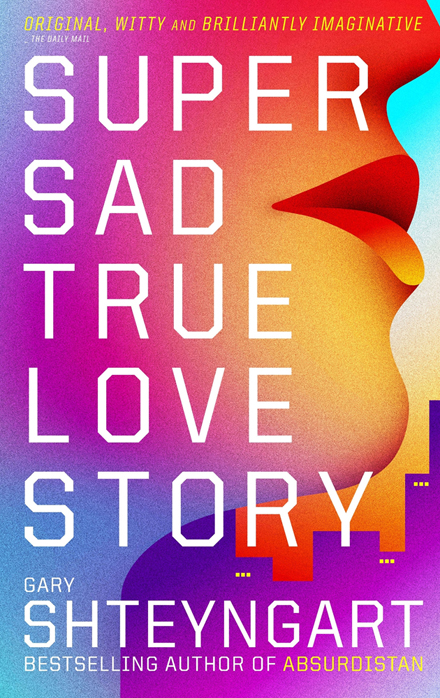The satirical novel Super Sad True Love Story is the account of a mismatched couple in a dystopian world
Lenny Abramov is a loser. He’s aging, he’s balding, and he’s meek. He is the polar opposite of all the young, attractive, go-getting junior executives at his job and sometimes it seems like his very existence is an insult to a society that worships youth, vitality, and perfection above all. What makes it even more difficult for Lenny to cope with his increasing age and receding hairline is the fact that he works for “Post-Human Services” in a department that specializes in “Infinite Life Extension,” effectively reversing the aging process and granting immortality to HNWI’s (High Net Worth Individuals). While he gets older, his clients get younger.
This society, a dystopian not-too-far-in-the-future America, is the center stage of Gary Shteyngart’s best-selling novel, Super Sad True Love Story.
As you might have guessed from the title, this is in fact a love story, and Lenny’s life changes when he encounters the youthful beauty, Eunice Park. Lenny believes that Eunice is the only thing that can fill the void in his life and after a brief awkward courting phase, Eunice agrees to give him a chance (mostly so she doesn’t have to move back in with her parents).
The story is told through excerpts of Lenny’s old fashioned — real paper! — journal and Eunice’s email correspondences on her “GlobalTeens” social network account. Social networks in this world are pushed to extremes, giving us some of the more hilarious and thought provoking moments in the book. By holding your “apparati” (standard issue tablet/iphone hybrid) at people, you can see their credit score, their family history and their vital signs including real-time updates on their level of excitement and arousal.
The most popular application is RateMe Plus, where everyone grades each other on several metrics, the most important of them: “fuckability.” While Eunice can take pride in having an 800+ score on fuckability, Lenny’s abysmal score of 230 follows him around like an electronic scarlet letter, making him a source of mockery and revulsion wherever he goes.
Although the narrative centres on this unlikely love story, it is Shteyngart’s imaginative version of America that steals the show. Shteyngart presents us with a decaying empire indebted to external forces, a country whose collective vanity and misplaced pride blinds them from their inevitable and quickening demise. Everyone is obsessed with appearances, including the incompetent American government run by the Bi-Partisan Party who are too busy scrambling, making sure everything looks pristine for the annual visit from their Chinese creditors, to see the multi-national wolves circling their prey.
What’s truly fascinating is how eerily familiar this dystopian vision is to the America we watch every day on the news. Super Sad True Love Story is a cautionary tale of a world we might find ourselves living in tomorrow if we remain superficial and indifferent.
That being said, the book is anything but bleak. Shteyngart has a unique writing style and sense of humor that makes you laugh just as much as it makes you think. The characters of Lenny and Eunice are extremely fleshed-out and multi-faceted, and their lopsided love story is often times adorable, often times tragic, but always entertaining and relatable.
This book is recommended to those that are into dystopias, light-hearted science fiction, or just hilarious writing in general. Also, there have been reports that reading Super Sad True Love Story in public may result in a modest increase to your fuckability rating.
Super Sad True Love Story is available for sale at Chapters Indigo stores and online at amazon.ca.
Trailer of Super Sad True Love Story, with interviews with author, Gary Shteyngart, and others — including James Franco.
